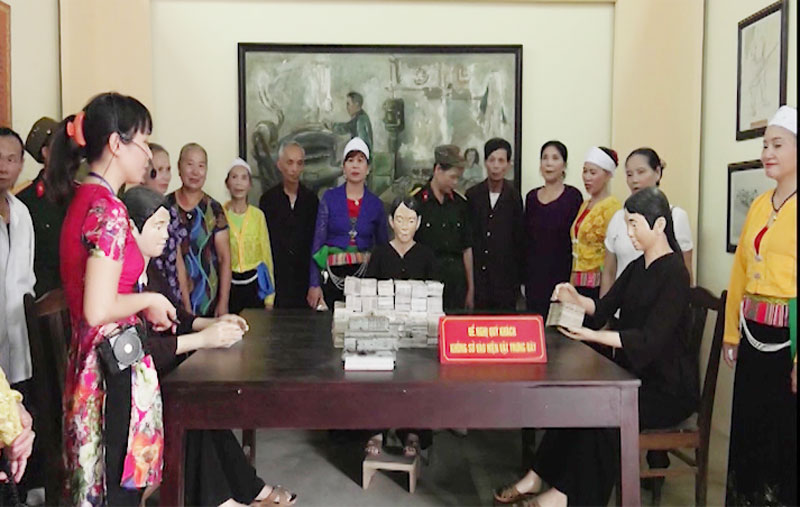
(HBO) - Tourism is considered as one of the advantageous economic sector in Lac Thuy district, especially spiritual tourism. This is also considered as one of the key economic sectors that bring great revenue to the local budget. However, in order to exploit this advantage, the district has faced with some difficulties, especially in terms of infrastructure. Therefore, the priority of improving this issue is being paid attention by Lac Thuy district.

The Printing Factory Relic Area, Co Nghia
commune (Lac Thuy) attracts many tourists inside and outside the province to
visit.
According to
statistics, Lac Thuy district currently has 85 relics, in which six relics have
been classified as the national relics by the Ministry of Culture and
Information, 11 relics are at provincial level and 29 relics need to be
protected. This is the basis for Lac Thuy district to develop tourism, in which
spiritual tourism is one of the strengths of the locality.
Identifying that tourism and services are important economic
sectors in the economic structure of the district, every year, the district promotes propaganda in
many forms and on the mass media about the country and people of Lac Thuy district. Especially, the sites of
sightseeing, scenery and cultural history of Tien pagoda, Phu Lao commune, the historic revolutionary
siteof the first revolutionary site of the first revolutionary printing house in Co
Nghia commune with the
international and domestic visitors, all of which make the
highlight of tourism activities, attracting many visitors to visit.
However, tourism in the
district has not developed adequately with the potential as well as available advantage. The revenue as well as the
number of visitors visiting in the early months of 2018 decreased 10% over the same period in 2017. This is
partly due to the fact that local tourism activities are mainly spontaneous; the connections amongroutes and tourist destinations are not effective; the tourism promotion and investment is not much, the State management of
tourism has not really been thorough and has not created the typical tourism products of the locality.
A diverse chain of eco-tourism and resort destinations concentrated in Hoa Binh city and the districts of Tan Lac, Da Bac, and Luong Son… Along with the launch of several key high-quality resort tourism projects, these developments have reshaped the landscape and enhanced the appeal of Hoa Binh as a travel destination.
Boasting diverse terrain, a mild climate, and rich natural resources, Cao Phong district is increasingly asserting its place on Vietnam’s tourism map, attracting both domestic and foreign visitors. The district is renowned for its stunning landscapes, majestic mountains, a crystal-clear hydropower lake, and the unique cultural identity of local ethnic groups.
With its pristine landscapes, unique cultural heritage of Muong ethnic minority, and an expanding range of visitor experiences, Tan Lac district of Hoa Binh has fast become a captivating destination for both domestic and international tourists.
Until now, Sung village in Cao Son commune, Da Bac district remains the only Dao ethnic community in Hoa Binh province to develop a community-based tourism model. Beyond its untouched natural landscapes, cultural identity serves as the cornerstone attraction for visitors.
Alongside the diverse cultural identities of the Kinh, Muong, Tay, Thai, Dao, and Mong ethnic people, Hoa Binh province is also renowned as the "capital" of the northwestern Vietnamese cuisine, offering unique and distinctive dishes. At festivals, during Lunar New Year (Tet), or on significant family or community occasions, special dishes are prepared, leaving a lasting impression on visitors.
A Phong Linh (Yellow Tabebuia) flower garden in Thang village, Thach Yen commune, Cao Phong district is currently in full bloom, drawing a large number of visitors.



